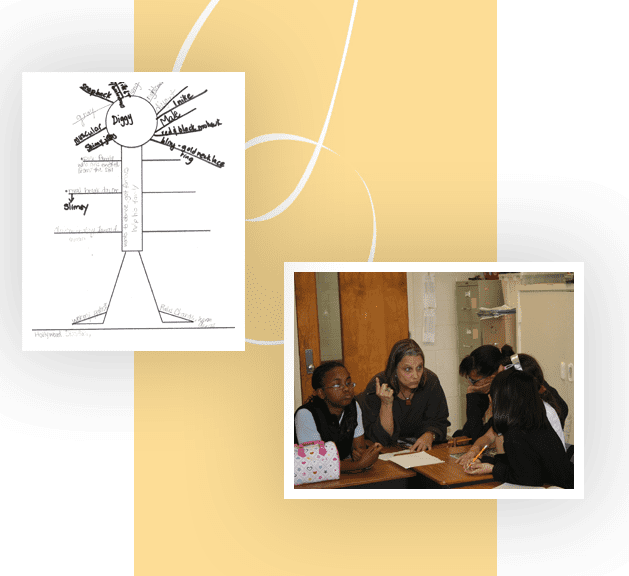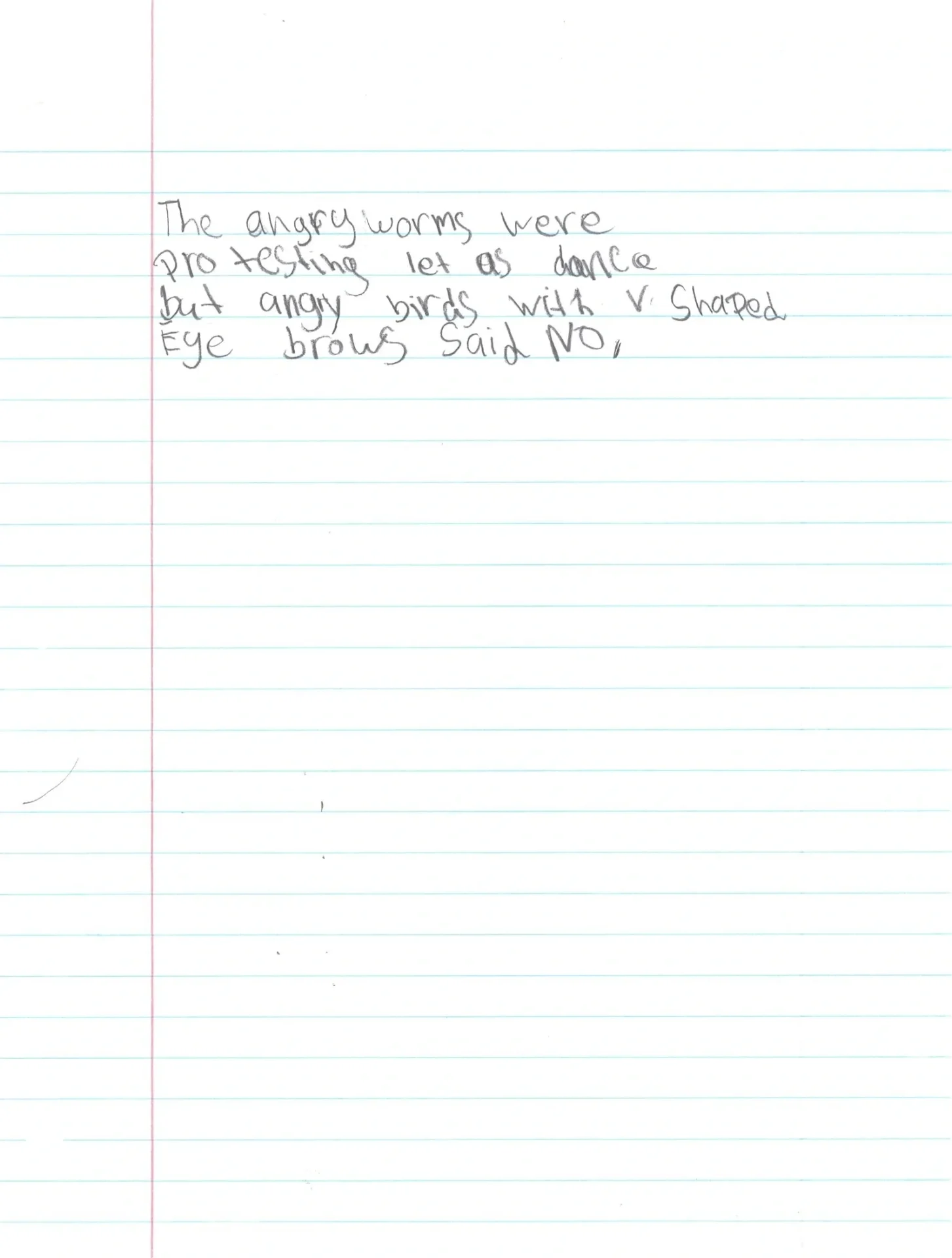
Let Worms Dance! (South Warren Elementary)
Jennifer Harris’ article published in The Warren Record recorded the entire process, giving you a complete picture of a collaborative narrative residency:
Visiting author sparks imaginations
South Warren students ‘struck by thunderbolt of creativity’ write book about dancing worms, prejudice during literacy-building project with visiting author
Article originally posted to The Warren Record: Wednesday, March 21, 2012 2:15 pm
By Jennifer Harris
Students at South Warren Elementary School “slurped horrible fish juice” during a unique learning activity that focused on literacy skills and opening their minds to the creative process of story telling.
Susie Wilde, an author, teacher, children’s book reviewer and columnist from Chapel Hill, was in the school Feb. 27-March 2 to lead fourth- and fifth-graders in writing a book. By the end of the week, students had a fully developed story including “juicy” words, colorful characters, supporting details and an opening paragraph designed to grab readers’ attention.
Diggy would never forget the morning the landlord birds burst into his family’s worm hole. He was just waking when he heard their gravely voices squawk, “Pay your rent, or you’re out!”
“It was a great week for us. The children were talking about it this morning,” Dr. Tony Cozart, South Warren’s principal, said the Monday after Wilde returned home. “Her being here brought some real direction for us. We’ve really been trying to improve our reading comprehension.”
Wilde and South Warren teacher Ashley Smith worked together in the creative learning process, with Smith connecting the students with past information they have had.
“My opportunity to team-teach with Mrs. Wilde was none less than exceptional and ideal for a partnership of that nature. This experience has catered to the comprehension needs of my students,” Smith said. “We met daily to assess the writing needs of our students and create exciting and engaging lessons.”
Wilde uses a stick figure called a “Story Skeleton” to help teach the writing process to older youth, with each body part representing a different story element. During an exercise that reinforced reading comprehension, Wilde read aloud “Ruth and the Green Book” and had students assign story elements to the skeleton. The head represented the main character, strands of hair were character traits, the spine was the character’s motivation, ribs represented conflicts, and so on.
The students later applied the same exercise in developing their own story, which had a break-dancing, Mohawk-wearing earthworm named Diggy as the main character, and prejudice against dancing worms as a theme.
The only thing he loved more than dancing was his family. He’d do anything to keep a roof over their heads and make sure they were safe from predators. So after supper, the night crawler slithered into his skinny jeans, wiggled into his tight T-shirt, and decorated himself with every bit of bling he owned. He popped his snap back over his red and black Mohawk and scooted into the streets of Hollywood.
To keep students motivated and engaged in learning, Wilde rewarded them with free books for displaying vocabulary knowledge of words like simile and alliteration, for skill in writing “showing” statements using vivid verbs, and for “Slurping Horrible Fish Juice” to describe supporting details—what you can See in a scene, Hear in a scene, Feel in a scene and Juicy words.
…Slimey was a dazzling, dynamite, dancing machine.
In addition to working with the students, Wilde held a session for parents and led a professional development workshop with South Warren’s teachers where she went through the Story Skeleton exercise, as well as using a Story Train, which is designed for teaching younger children.
“I was very happy with this,” Cozart said. “The Story Skeleton or Story Train gives a visual way for teachers to lay out the framework of a story, talk about a story and dissect it. It helps the students with their level of comprehension.”
Reading comprehension is an area the school has focused on improving since a needs assessment was performed last year, the principal added.
“Since (then), we’ve really been working to increase our student engagement, but some of the students weren’t engaged and learning like we wanted,” Cozart said. “Every time I came in (to observe Wilde) the level of engagement was high. We’ll be able to use those same strategies. We got the kind of help we needed in an area that’s been a challenge for us… especially with the new Common Core Curriculum that’s coming up (in the 2012-13 school year).”
The energetic Wilde, who has a passion for teaching in rural areas, was just as impressed with her experience.
“This was the best residency I’ve ever had. A lot of it is Ashley, and a lot is the subject,” she said. “(Ashley) was co-teaching the whole time. She’s very familiar with curriculum needs, such as helping the students make text-to-world connections they have to get on end-of-grade tests. She takes my work above and beyond.”
Developing the subject of the students’ story—prejudice experienced by Diggy, who needs to earn money for his family by break dancing—taught Wilde a few things, too. She wasn’t familiar with break dance terms and certain types of apparel, such as a snapback hat, worn by Diggy.
…he busted out his signature move. His Robot was such a hit that traffic stopped for blocks. Worms and people cheered and the cars beeped.
“The kids were struck by a thunderbolt of creativity. They had Funds of Knowledge about break dancing, and I had Funds of Knowledge about writing,” she said. “They did incredible work, and they got up and break danced for me the last day. The kids had to teach me about that.”


